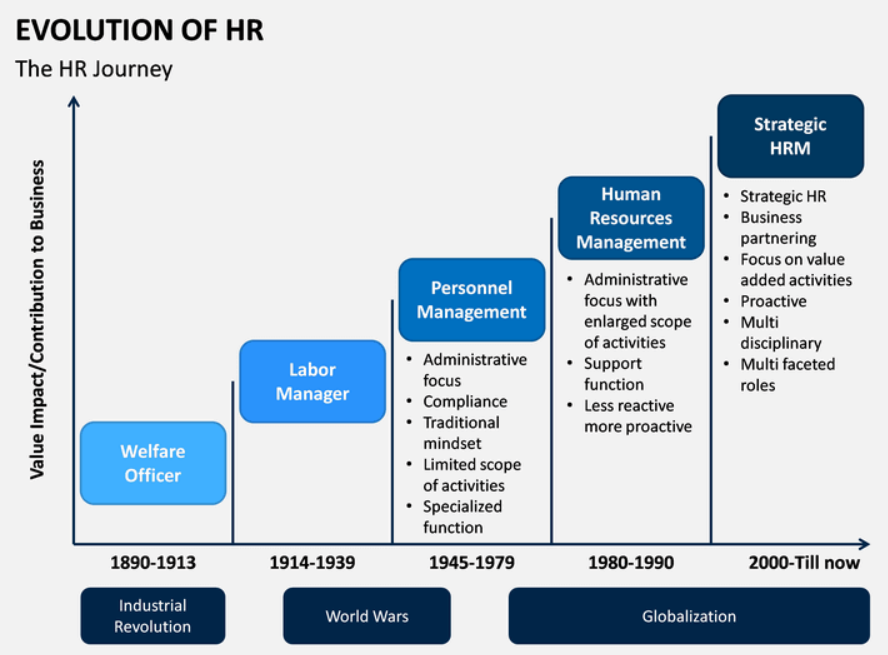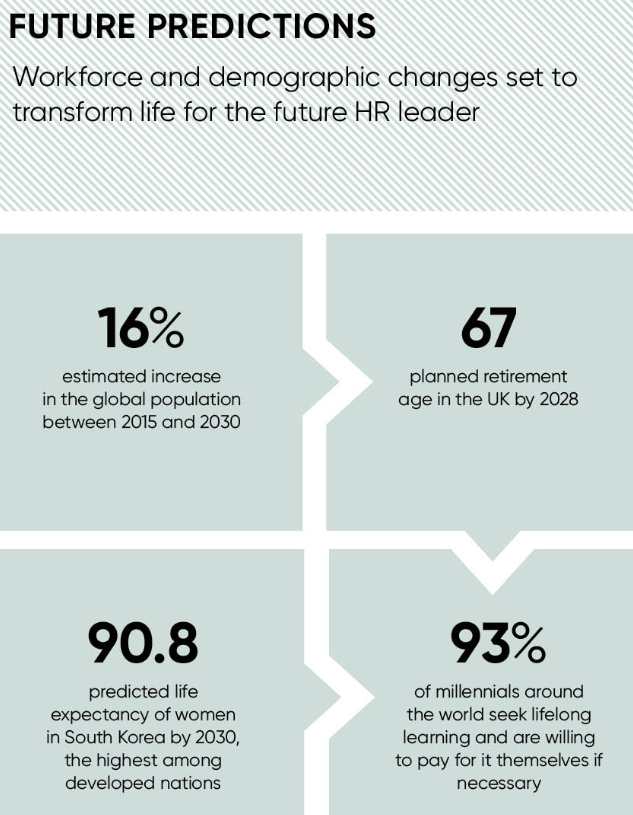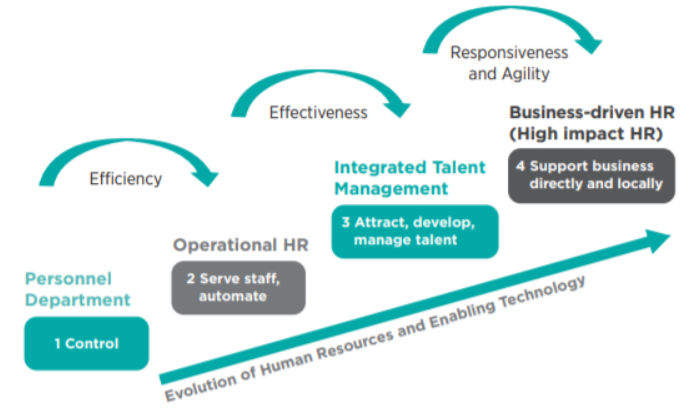The profession of Human Resource has evolved over the years. In the past, HR professionals were only concerned with salary and benefits, but now they are required to take into account a wider range of factors that affect employees’ productivity and satisfaction.
One of the most important things that HR professionals must consider today is how to engage their staff in an environment that encourages collaboration and innovation. This trend is largely due to the fact that businesses are no longer able to rely on their traditional modes of communication like email or phone calls—the internet has become the go-to way for companies all over the world to stay connected with their employees at all times.
In this blog, we’ll discuss the change in the profession of Human resources, the future of HR, and other relevant information. So, without waiting any further let’s get started with this blog.
How Has HR Changed Over the Last 5 Years?
Many years ago the Human resource department was simply known as “personnel” as its primary duty was to keep records, ensure companies followed the regulations in compliance with law, and compensation packages, and determine wages and other benefits.
Over the last 5 years, HR has drastically changed, thanks to the technologies that made the HR department what it is today. The most important thing that HR departments spend their time on is in engaging employees.
Another change in the HR field is that more and more companies are turning to technology as a tool for improving efficiency within their organizations. This can be seen through everything from company-wide intranets which allow employees access to information about company goals and projects, as well as HR software programs which help managers keep track of employee performance stats like hours worked per week along with other metrics such as turnover rates.
Considering the advancements and changes that have taken place in the HR industry over the past five years, according to a recent survey, 80% of participants felt that their company’s HR capabilities are missing. It would appear that the fact that businesses are often cautious of change is a major contributing factor.
Here check what HR has changed in the past decades:

1: Employee Engagement for Increase in productivity
Today’s workforce as a whole is largely disengaged from their jobs. In fact, according to a recent Gallup research, only 31.7% of workers are engaged, which means that almost 7 out of 10 employees aren’t passionate about their work and aren’t ever prepared to go above and beyond.
At work, happier employees are more engaged. Also, they produce more than their disinterested counterparts. The quality of work improves across the board when HR departments put more effort into boosting engagement, and staff members are also more likely to get along with one another. Unlike disengaged employees who might find it difficult to grin at all, they will be in a happy, helpful mood.
2: Strengthening Culture for Long-Lasting Bond
The culture of a corporation outlines its goals, tenets, standards, and more. What is expected of workers is governed by culture.
According to our Engagement Report, one of the strongest correlations between culture and employee happiness exists. An employee is more likely to be content when a company’s culture is robust.
Employees that are culturally compatible are not only more motivated to perform at the highest level, but they are also more likely to believe in the work that your business is doing and treat clients with real regard.
It is very simple to determine whether employees are satisfied with the corporate culture and think that things are going according to plan thanks to HR technologies.
3: Managing Talent
Only 25% of workers believe their organisations provide enough opportunity for professional growth, despite the fact that many modern employees are very interested in having opportunities to develop and progress at their companies.
Offering your best employees the chance to learn new things and develop new talents is essential if you want to keep them on board. You can’t just assume that they’ll be around forever and take them for granted.
What is the Future of the HR Profession?
Know what the HR profession holds in the future. How the organizations are getting benefit of it and how the change in technology will be useful for both the employees and the company.

1: Flexibility in Workspace
Since the pandemic has changed the working style of the companies, nowadays employees are demanding for flexibility in work-life balance whether it is office, remote, or hybrid.
No longer is location a factor in hiring. According to data from the Pew Research Center, more than 22% of adults have migrated since the pandemic or know someone who has. Flexible workspace choices must be incorporated into the talent acquisition and retention strategy in order to compete in the war for talent.
2: Working in Metaverse and Potential in Training
Technology is continuing to advance. HR executives must take into account not only new software and products but also how technology will change in the upcoming years.
Employees might be able to train or work in virtual reality thanks to the metaverse. During the pandemic, some groups tested this.
Employees might no longer be constrained to regional training or sales presentations as these technologies develop; they might be able to communicate with people all over the world. A salesperson for a hardware store, for instance, may virtually show a potential customer the merchandise. Universities have already started using metaverses to train healthcare professionals.
3: Bespoke about Employee Development & Training
Where people’s labor does not determine the demand for personal choices. Employees want to be acknowledged for their uniqueness, including their barriers as well as their abilities.
Because roles can differ not only between companies but also within companies as individual employees acquire distinctive skills and capabilities, businesses can no longer design training programmes for their employees that are one size fits all.
HR executives should start considering how they can personalize training and development programmes for specific employees to support their growth and development.
4: Employees Well-Being
Companies primarily looked to HR teams to develop and implement strategies when they started to react to the Covid-19 pandemic, including testing procedures, PPE, and social distancing tactics.
After the epidemic, there may be a greater demand for HR executives to support employee well-being. Leaders in HR are concerned with employee behavior because doing so will help to increase productivity and decrease attrition. Encourage a stressed worker with leftover holiday time to take some time off; this could boost morale and lower turnover.
How Will HR Change in the Future?
HR, or human resources, is a vital part of any business. In the future, HR departments will continue to evolve as businesses shift to an employee-centric model. At the same time, technology will play a greater role in HR practices. Here are five ways that HR will change in the future:

- Personalization: Companies are beginning to understand the importance of personalized HR practices. This means tailoring policies and procedures to reflect an employee’s unique needs. For example, an employee with a disability may require different accommodations than someone who doesn’t have one.
- Mobility and agile recruiting: Older workers are increasingly retiring, while younger generations are more mobile and eager to be recruited into companies early on in their careers. As a result, HR professionals will need to develop ways to manage recruitment processes across multiple channels – online, face-to-face, and even in real life.
- Artificial intelligence and robot specialists: In 2018, 37 percent of jobs were likely to be replaced by robots or artificial intelligence (AI), according to futurist Ray Kurzweil. That’s because robots are versatile and can do many tasks that humans can do – like work in factories or perform administrative tasks at hospitals. HR professionals must ready themselves for this eventuality by investing in training and developing policies that accommodate these new technologies.
- Employee relations: The rise of social media has complicated traditional approaches to managing employee relations. Instead of simply issuing communique through company channels, many organizations now use social media as a tool for communication and feedback between employees and their managers. Additionally, hybrid models – where part of an individual’s job takes place outside of the company – are becoming more common due to technological advances like remote workforces and autonomous vehicles. Employers must consider how these developments will affect their HR protocols and practices.
- Data analytics: Many companies are using big data techniques to analyze employee behavior and uncover insights that help them improve operational performance or marketing efforts related to their products or services. To stay ahead of the curve, HR must equip itself with cutting-edge analytics tools that can provide insights into various areas such as talent management or succession planning.
What are the Changing Phases of HR?
HR is undoubtedly one of the most important elements in an organizational landscape. It influences everything from recruitment and hiring to succession planning. In this rapidly changing world, how does HR change with each passing phase?

The Human Resource (HR) function has undergone significant changes over the years. A fundamental shift took place in the 1960s when labor laws became more focused on employee rights. This initiated a change in the focus of HR from primarily managing work relationships to fostering communication and promoting team spirit. Another significant era in HR was the 1990s when technological advancements made it easier for organizations to manage their human resources online. Over time, HR has shifted its focus to reflect the challenges and opportunities posed by these new technologies.
As HR evolves, so too do its responsibilities and practices. For example, today’s HR professionals are better able to identify talent gaps and assess needs related to eleventh-hour recruitment efforts. They are also better able to deal with cases of fraud and sexual harassment. As technology continues to evolve, so too will HR’s role within organizations.
Conclusion
I hope you enjoyed our blog on A Change in the Profession of HR. The lines of conversation between staff and management are maintained transparent and open through HR, and employees frequently have a better understanding of customer expectations than management does.
Even though it is impossible to forecast the future with absolute certainty, making predictions based on market and industry metrics is undoubtedly helpful. The reality that HR is a field that is still developing confirms that fact.
Follow The Corporate Demands for more information.
Know about the Role of ATS application tracking systems in hiring.

